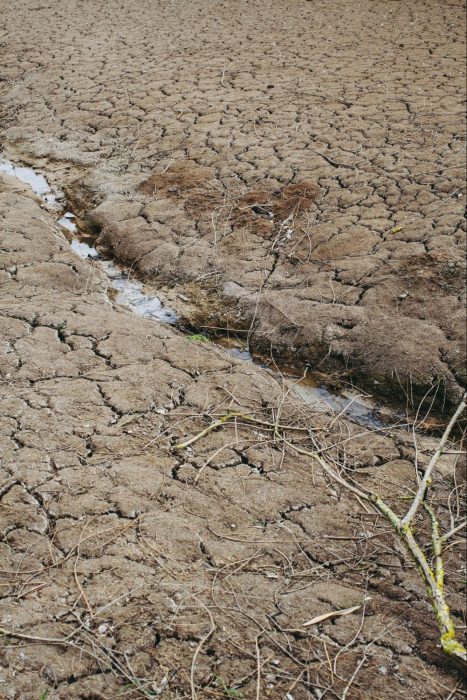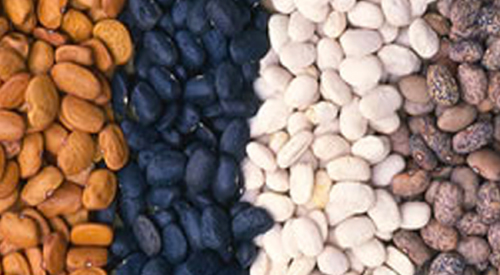by Sarah Sharman, PhD, Science writer
Countless studies by researchers around the world indicate that Earth’s climate is changing faster now than at any point in the history of modern civilization. Hotter days are more common while colder days have become less common. Warmer temperatures and changing precipitation patterns have given rise to increased occurrences of drought and forest fires throughout the western United States, destroying homes, communities, and entire ecosystems.

Increasing heat and drought also threaten food security due to their negative impact on crop productivity. Few domesticated crops exhibit sustainable food production when exposed to climatic stress. However, plant species that evolved under extreme stress conditions, like drought, high temperatures or pests, often have genetic adaptations to survive under extreme stress.
Since climate change is going to continue to make weather more unpredictable all across our planet, scientists are trying to produce more tolerant and resilient crops that can withstand our ever-changing climate by pinpointing genetic adaptations in plants that thrive under extreme stress conditions.
Sujan Mamidi, PhD, Avinash Sreedasyam, PhD, Jerry Jenkins, PhD, and co-directors Jane Grimwood, PhD & Jeremy Schmutz from the HudsonAlpha Genome Sequencing Center at the HudsonAlpha Institute for Biotechnology contributed their genomic sequencing and analysis expertise to a project recently published in Nature Communications that discovered genetic factors associated with climate resilience in a species of bean important in food security.
What are tepary beans?
Common bean, which includes varieties like kidney bean, navy bean, pinto bean and wax bean, is the most consumed grain legume worldwide. They are grown in both developed and developing countries and serve as an important source of protein, carbohydrates, some vitamins and micronutrients.
Given current trends in population growth, demand for nutrient rich, inexpensive crops like the common bean is expected to grow at unprecedented levels. While the common bean is adapted to a wide range of climates, it is sensitive to drought and extreme temperatures. Improving common beans to withstand rising temperatures and changing precipitation patterns is an important goal for helping to feed the ever-expanding population on earth.
Tepary bean is a sister species to the common bean and may hold the key to breeding more resilient varieties of common bean. Tepary bean is a legume native to the southwestern United States and Mexico that has been grown there by native peoples since pre-Columbian times. It is very drought tolerant and can grow in areas with little annual rainfall. However, tepary bean is produced on a limited scale that researchers attribute to its small seed size and the way it grows close to the ground.
Using genetics to improve tepary beans to produce larger seeds and a higher yield could position it as an alternative protein source in hot, arid regions. Genetically understanding how tepary beans survive in high temperatures with so little water could also provide a genetic resource for climate stress tolerance to breed more resilient common beans under a changing climate.
Tepary bean reference genome enables many discoveries
In order to pinpoint the genetic basis of heat tolerance in tepary beans, the scientists first created a reference genome for tepary beans. The team of scientists de novo sequenced and assembled a PacBio high quality genome reference integrated into chromosomes for a cultivated variety of tepary bean called Frijol Bayo. They also assembled a more fragmented genome for a wild variety of tepary bean called W6 15578. HudsonAlpha scientists were previously involved in sequencing the first common bean genome as well.
With the new reference genomes in hand, the scientists set out to look for genetic clues to tepary bean’s climate adaptation. The team exposed Frijol Bayo (tepary bean) and Amadeus-77 (a type of common bean) plants to moderate night time stress and analyzed gene expression at different timepoints during exposure.
The scientists found differences in the expression of genes related to a class of proteins involved in an organism’s response to stress, called heat shock proteins. Heat shock response is conserved across all kingdoms of life and protects proteins from negative effects by stressors such as increased temperatures, oxidative stress, and heavy metals.
Within an hour of elevated temperature, common beans showed upregulation of 15 genes encoding heat shock proteins, whereas tepary beans showed downregulation of three heat shock-related genes. These findings suggest that tepary beans have an elevated temperature threshold for induction of heat shock response, meaning the tepary bean plants are more tolerant to high temperatures and drought.
Gene expression analysis also suggests that under a moderate night-time heat temperature which is limiting to growth in common beans but not tepary beans, tepary beans arrest the cell cycle and synthesize protective compounds. By controlling cell cycle transition, cells are able to respond to their environmental cues by inhibiting cell growth and development in order to conserve energy.
While the tepary bean can handle heat and drought, the scientists discovered that it is less capable of surviving the threat of disease. The information that scientists have already learned from the tepary bean genome can help them introduce disease resistance traits from common beans into the tepary bean, or alternatively introduce drought tolerance from tepary bean into the common bean.
With the help of genomics, scientists like those at the HudsonAlpha Genome Sequencing Center are moving one step closer to improving crops to meet increased food demands in the midst of climate change and population growth.

